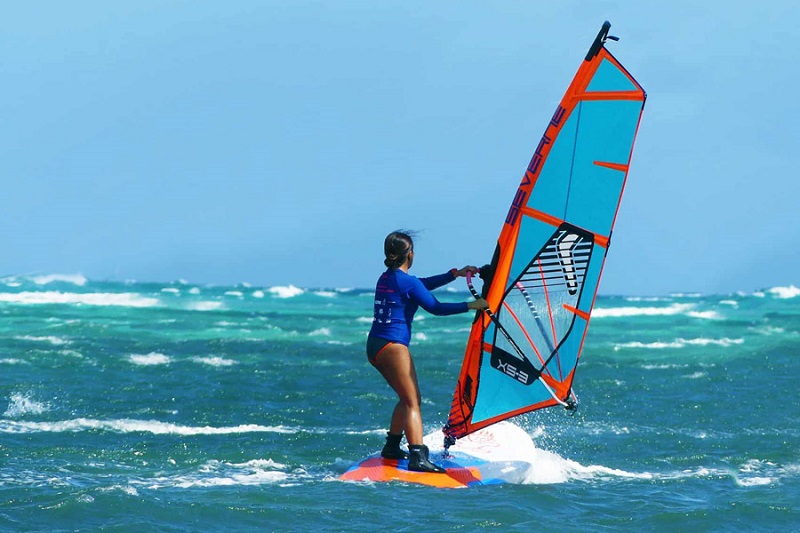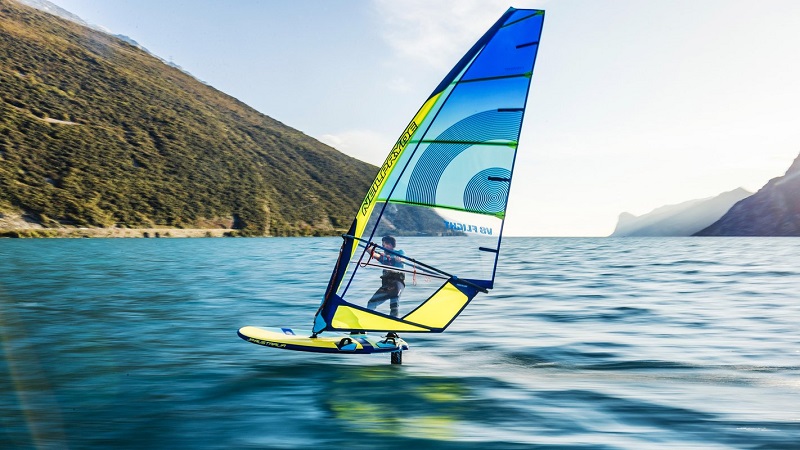Types of windsurfing boards

For a beginner, having the right equipment is more important than for an advanced surfer to not fall out of love from the beginning of this sport and not to spend more time than necessary to learn maneuvers and gaits.
The best thing is to find an occasion where everything else is sold to you along with the table because that way you get great deals. The cost of apparently secondary accessories such as the mast extension with its foot should not be underestimated.
Which windsurfing board?
Currently, models are available on the market that allows learning the basics and gliding conduction. This type of windsurfing board is characterized by the high width (up to 1 meter), the impact resistance, the possible presence of a removable or retractable stem, the EVA coating, a soft material that greatly reduces the problems of bruising and excoriations. In recent years, the price of these windsurfing boards has dropped a lot: 800 euros for a new one. The second hand is still the best card to play. A good way to get them is to contact windsurfing schools at the end of the season.
Dimensions: Not less than 160 ÷ 170 liters Length is not important: it has been understood (finally!) That volume and width count for stability.
It derives: It is not essential. You can find it retractable on all-around hulls a few years ago or fixed but removable on modern wide school windsurfing boards. It helps to rewind when, due to problems, you are overdue too leeward.
Accessories: The windsurfing board must be equipped with a fin and strap (they cost an eye!). Better if original. Beware of the mast foot on windsurfing boards until the 1990s: if the windsurfing board has a non-universal type attachment, you must require the original foot because they are no longer found.
Other characteristics: It isn’t easy to make a general discussion on the behavior of a windsurfing board in the water. The specialized magazines tend to treat this kind of equipment with a specific sufficiency but be well aware that a modern school windsurfing board can make you learn all the gliding gaits.
Wave
This family of tools was born and is designed for use in the waves and, more precisely, in the breakers. From an exquisitely philological point of view, they can be considered as the latest version of the original windsurf boards, born from the idea of applying a sail to a wave surf.
The volume drops abundantly below 100 liters and the sails in the waves: traditionally, the largest sail for this specialty is the 5.7.
In addition to the small size, other peculiarities stand out on these windsurfing boards: the front straps moved to the center until they touch each other, the rounded edges for control on tight curves and the rather high bow on the water both as a shape and as a glide angle.
Freeride / Cruising
They are windsurfing boards for going out with medium / weak winds and shallow seas when you want to have fun tackling without the ambitions of a racer. Rather fast and versatile in various gaits, their main requirement is the ease of use.
Speed
These windsurfing boards are exclusively dedicated to Speed competitions in which the travel time of a straight course of a predetermined length is timed. They are uncompromising products with no other application and should be understood as aimed at the competitive world.
Freestyle
Pretty young windsurfing board category, just like the specialty for which they are designed. Symmetrical outline, volume also available in the bow, channel in the hull are some of the features necessary to perform the stunts forward and reverse typical freestyle. Compared to the classic wave boards, they are wider and therefore faster to take the glide.
Race
Highly technical, very performing windsurfing boards able to develop high speeds even at weight-bearing speeds. Like the Formula, these are racing boards, but they are narrower and more versatile than the latter providing higher speeds in downwind and offer undoubtedly better-jibing performance. The next generation race board’s lines will be inspired by the prototypes used in the PWA circuit in the Slalom 42 competitions, the specialty that replaced the Formula windsurfing. They are built with very light materials. The risk of breakage in the “unscheduled” is very high.
Slalom
There is some confusion around this term: in beach jargon, the word is often overused to mean light wind gear. In reality, slalom boards have their own dignity. Compared to racing, they are narrower to offer greater speeds at the expense of gliding entry, guarantee maximum performance in jibing and, with an appropriate fin, can defend themselves even upwind. With the creation of the Slalom 42 races, we can imagine that the distinction between slalom and race will disappear.
Freemove or convertible
Boards that most embody the “free” spirit born in the late 90s. Convertibles are all-rounder windsurfing boards: by changing the type and size of fin, you can easily switch from slalom use with the medium wind to wave use with sails that are not too small.




